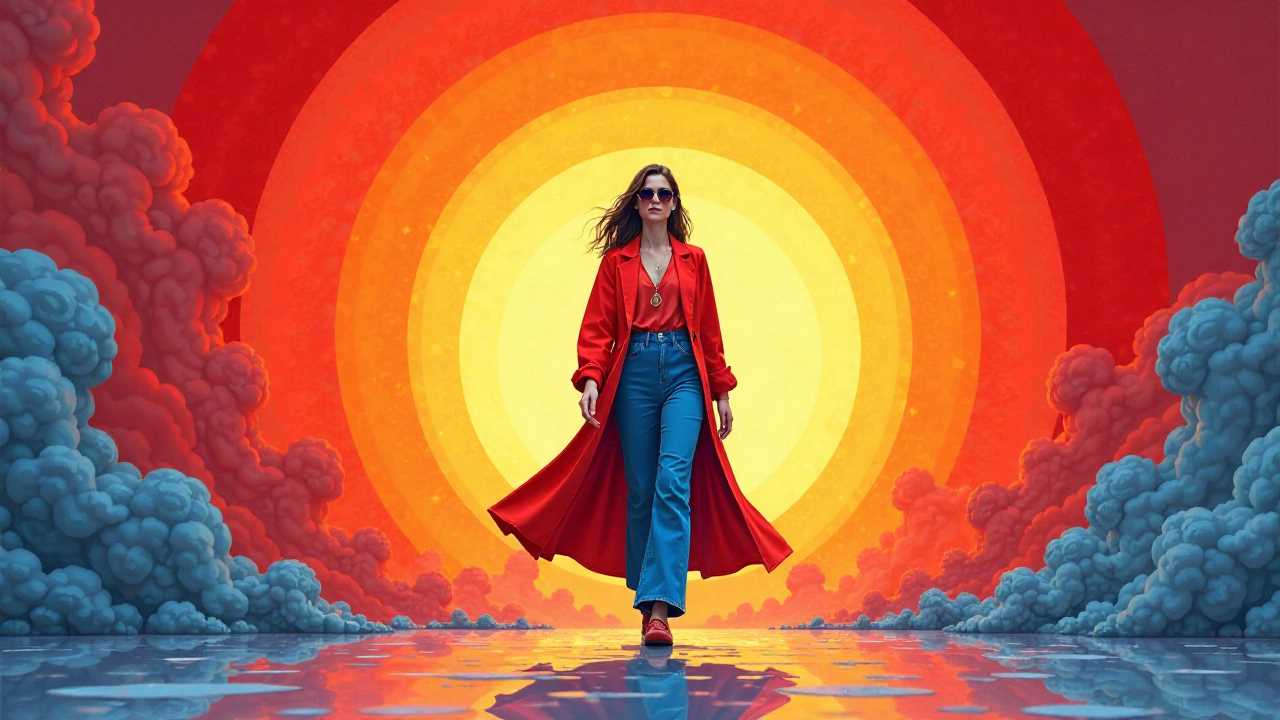
Understanding Color Theory in Fashion
Color theory serves as a foundational element in the world of fashion, guiding designers and enthusiasts alike in creating visually appealing ensembles. At its core, color theory encompasses the study of how colors interact, the emotions they evoke, and the aesthetic principles that govern their use. By mastering color theory, we can elevate our fashion choices, ensuring that our outfits resonate with our personal style while also making a statement.
The Significance of Hue in Fashion
Hue refers to the pure color itself, devoid of any tint or shade. It is the aspect of color that allows us to differentiate between red, blue, green, and so forth. In fashion, selecting the right hue is paramount. Different hues can convey various moods and messages. For instance, warm hues like red and orange often evoke feelings of energy and passion, making them ideal for bold statements. Conversely, cool hues such as blue and green tend to promote calmness and tranquility, perfect for more subdued looks.
When curating a wardrobe, we should consider the hues that complement our skin tones. Warm skin tones typically harmonize with earthy hues, while cool skin tones shine in jewel tones. By understanding the impact of hue, we can make informed choices that enhance our overall appearance.
The Role of Saturation in Fashion Choices
Saturation refers to the intensity or purity of a color. A highly saturated color appears vibrant and bold, while a desaturated color appears muted and soft. In fashion, saturation plays a crucial role in determining the overall impact of an outfit. High saturation can draw attention and create a striking look, while lower saturation can evoke a sense of sophistication and subtlety.
When selecting garments, we should consider the occasion and the message we wish to convey. For a lively event, opting for highly saturated colors can make a powerful statement. On the other hand, for professional settings, desaturated colors can project confidence and authority without overwhelming the observer.
Creating a Cohesive Palette
A well-curated color palette is essential for a cohesive wardrobe. By selecting a range of colors that work harmoniously together, we can create outfits that are visually appealing and easy to mix and match. When developing a palette, we should consider the balance of hues, saturation levels, and the overall mood we wish to convey.
One effective approach is to choose a dominant color and build the palette around it. This dominant hue can be complemented by analogous colors—those that are adjacent on the color wheel—or contrasting colors for a more dynamic look. By understanding the principles of color theory, we can create a versatile wardrobe that allows for endless outfit combinations.
The Importance of Contrast in Fashion
Contrast is a vital element in color theory that refers to the difference between colors. High contrast outfits, such as pairing black and white or complementary colors, can create striking visual effects that command attention. Conversely, low contrast outfits, characterized by similar hues or shades, can produce a more harmonious and understated look.
In fashion, we can utilize contrast to highlight specific elements of our outfits. For example, wearing a bright accessory against a neutral outfit can draw the eye and create a focal point. Understanding how to manipulate contrast allows us to enhance our personal style and make intentional fashion statements.
Monochrome Looks: A Timeless Choice
Monochrome outfits, which consist of varying shades and tints of a single hue, offer a sophisticated and streamlined appearance. This approach to color allows us to play with texture and silhouette while maintaining a cohesive look. Monochrome ensembles can be particularly effective in professional settings, where a polished appearance is essential.
To create a successful monochrome outfit, we should experiment with different fabrics and patterns within the same color family. This adds depth and interest to the look while remaining true to the monochromatic theme. By mastering the art of monochrome dressing, we can achieve a chic and elegant style that is both timeless and modern.
Complementary Colors: A Bold Fashion Statement
Complementary colors are those that are opposite each other on the color wheel. When paired together, they create a dynamic and eye-catching effect. Utilizing complementary colors in fashion can result in bold and adventurous outfits that stand out in any setting.
For instance, pairing a vibrant orange with a deep blue can create a striking contrast that draws attention. When experimenting with complementary colors, we should consider the saturation and intensity of each hue to ensure a balanced look. By incorporating complementary colors into our wardrobe, we can express our creativity and individuality through fashion.
Elevating Your Fashion Game with Color Theory
Mastering color theory is an invaluable skill for anyone looking to enhance their fashion sense. By understanding the significance of hue, saturation, palette, contrast, monochrome, and complementary colors, we can make informed choices that reflect our personal style. Whether we are curating a wardrobe or selecting outfits for specific occasions, the principles of color theory provide a framework for creating visually stunning ensembles. Embrace the art of color theory, and watch as your fashion choices transform into powerful expressions of your unique identity.
 SportsHollywoodLifestyleFashionHome & GardenTrendsPrivacy PolicyTerms And Conditions
SportsHollywoodLifestyleFashionHome & GardenTrendsPrivacy PolicyTerms And Conditions
